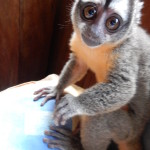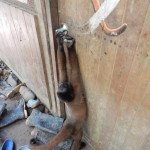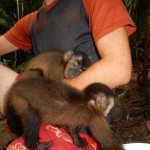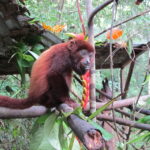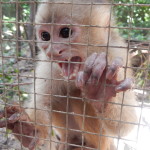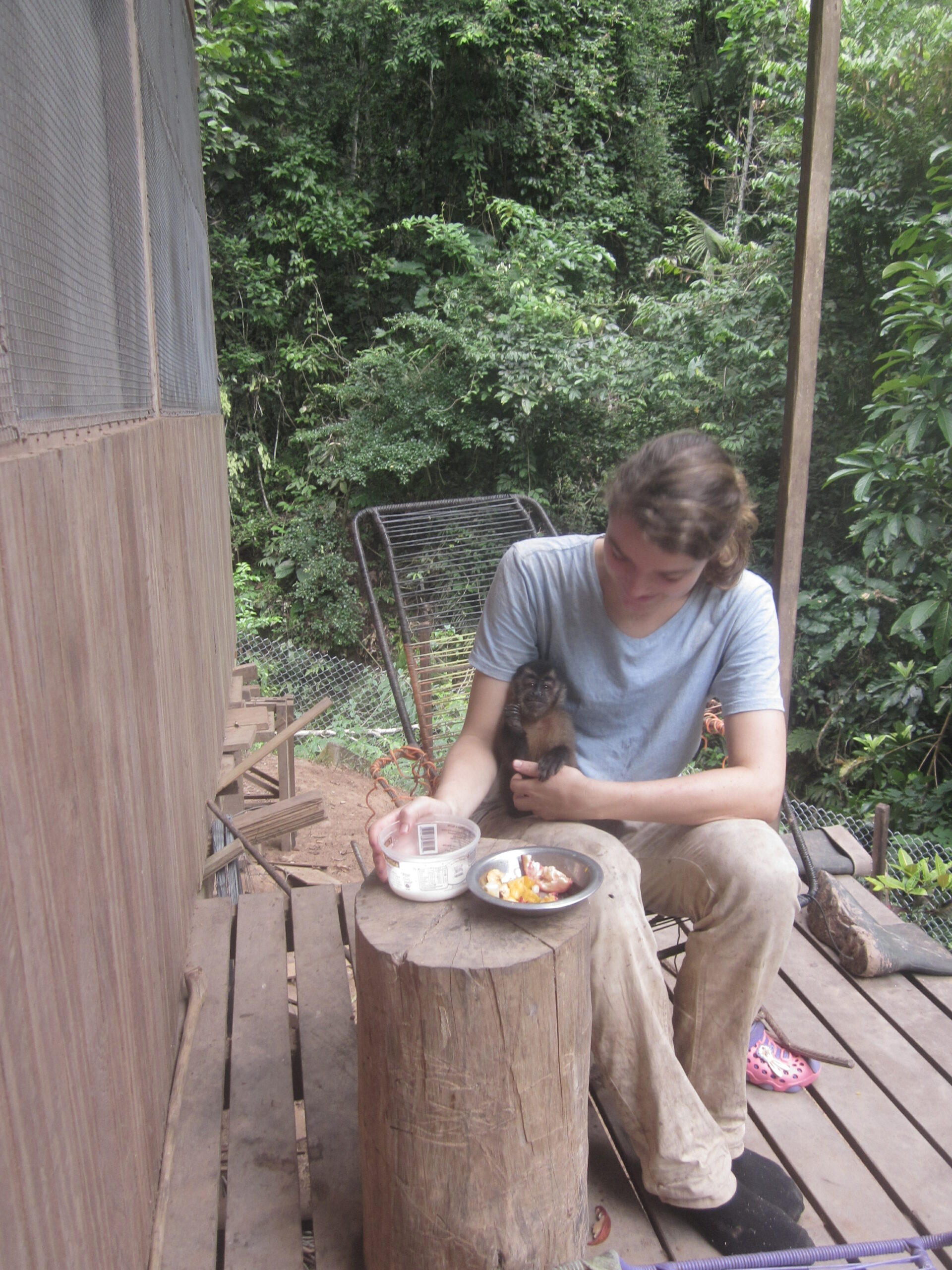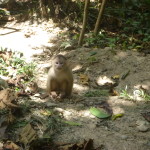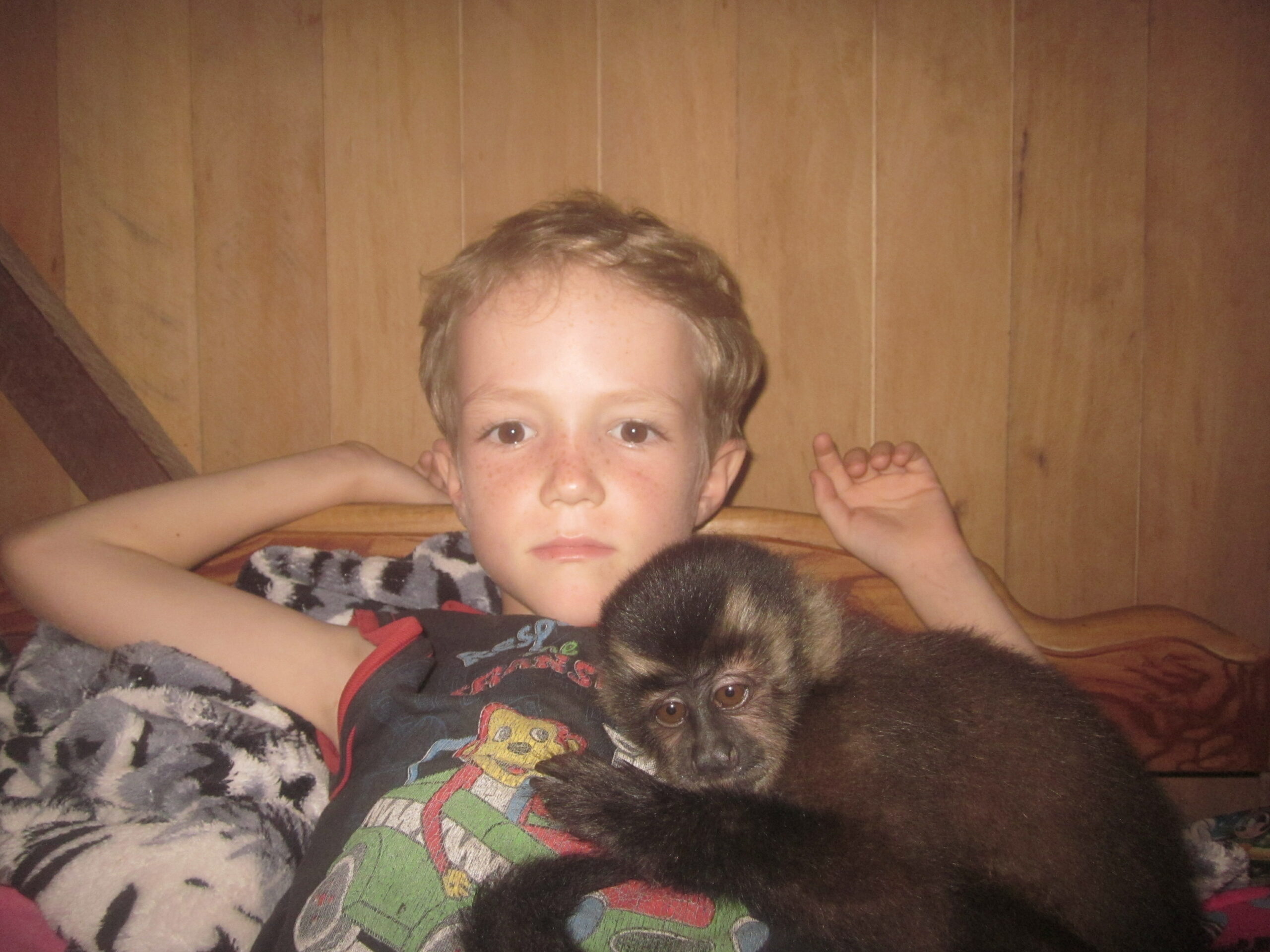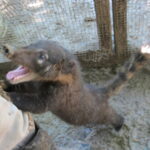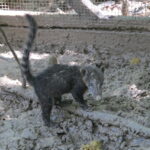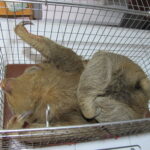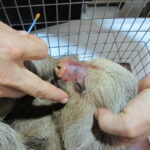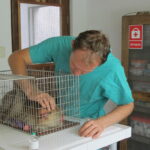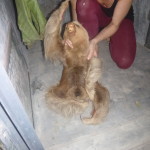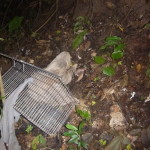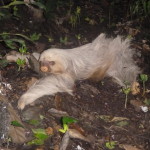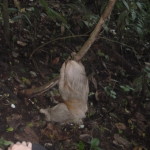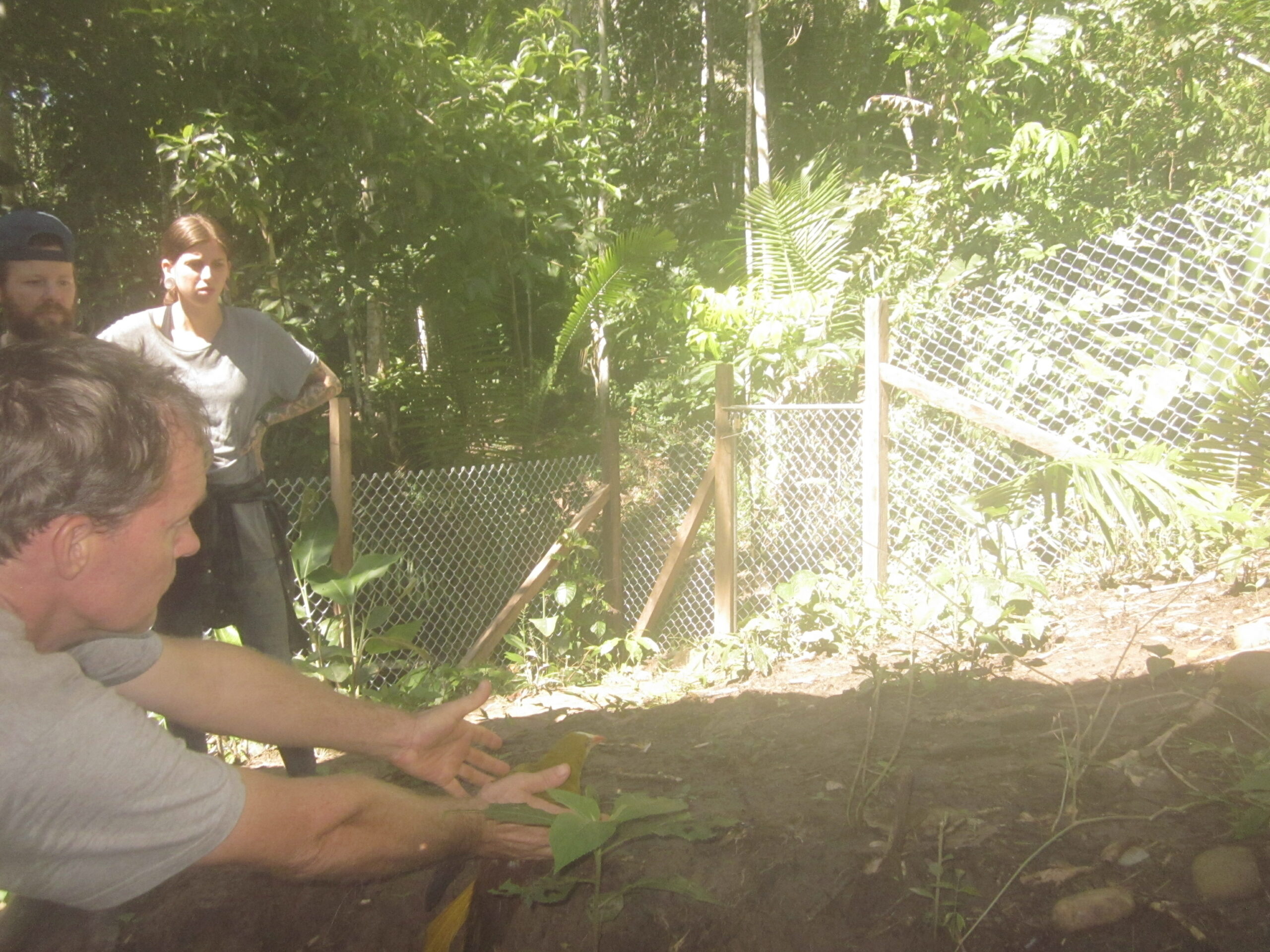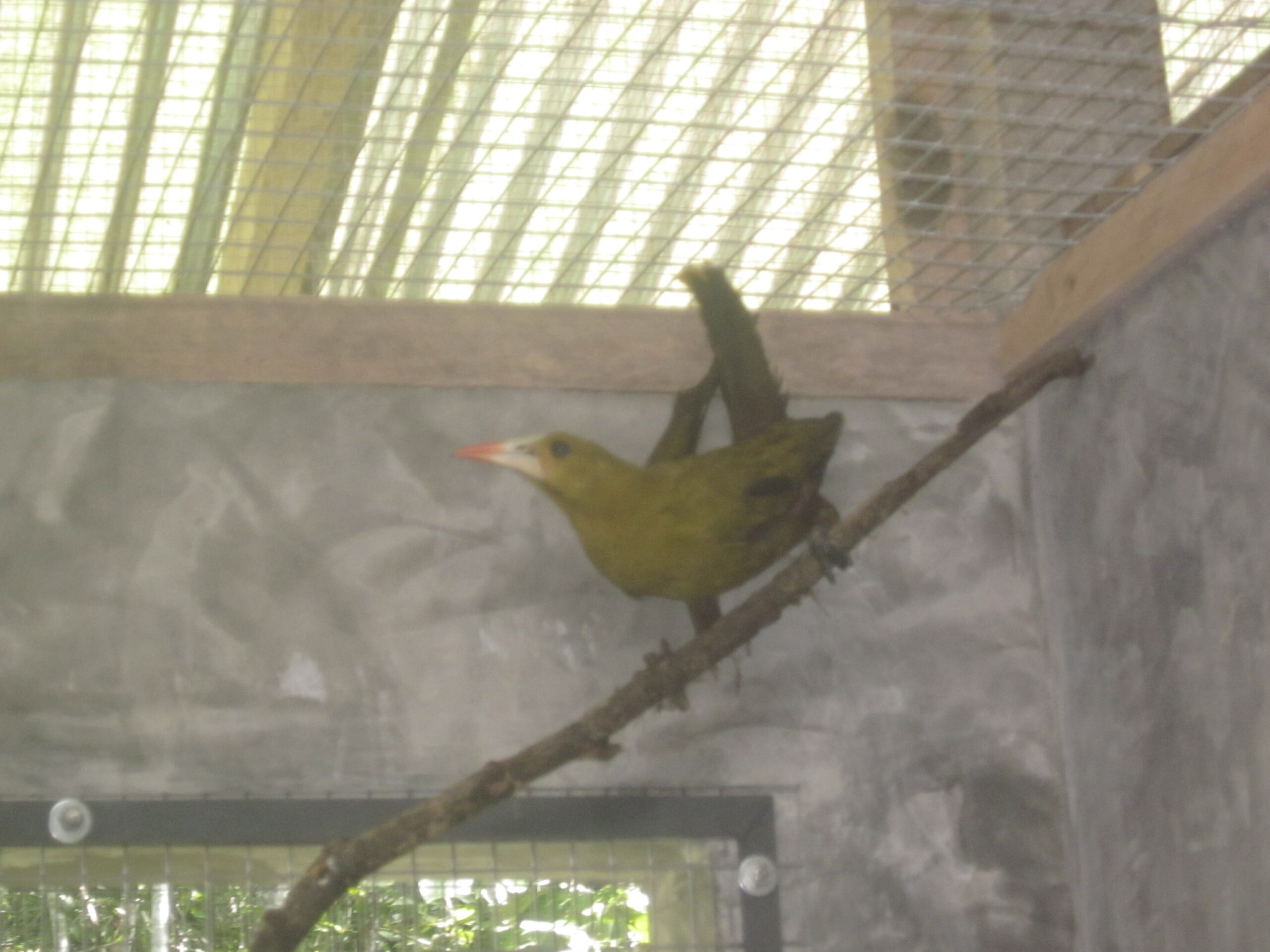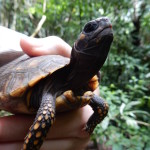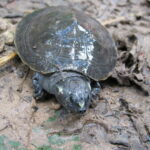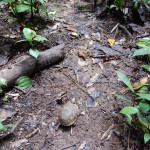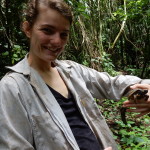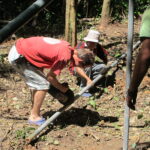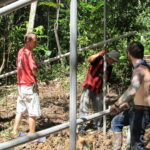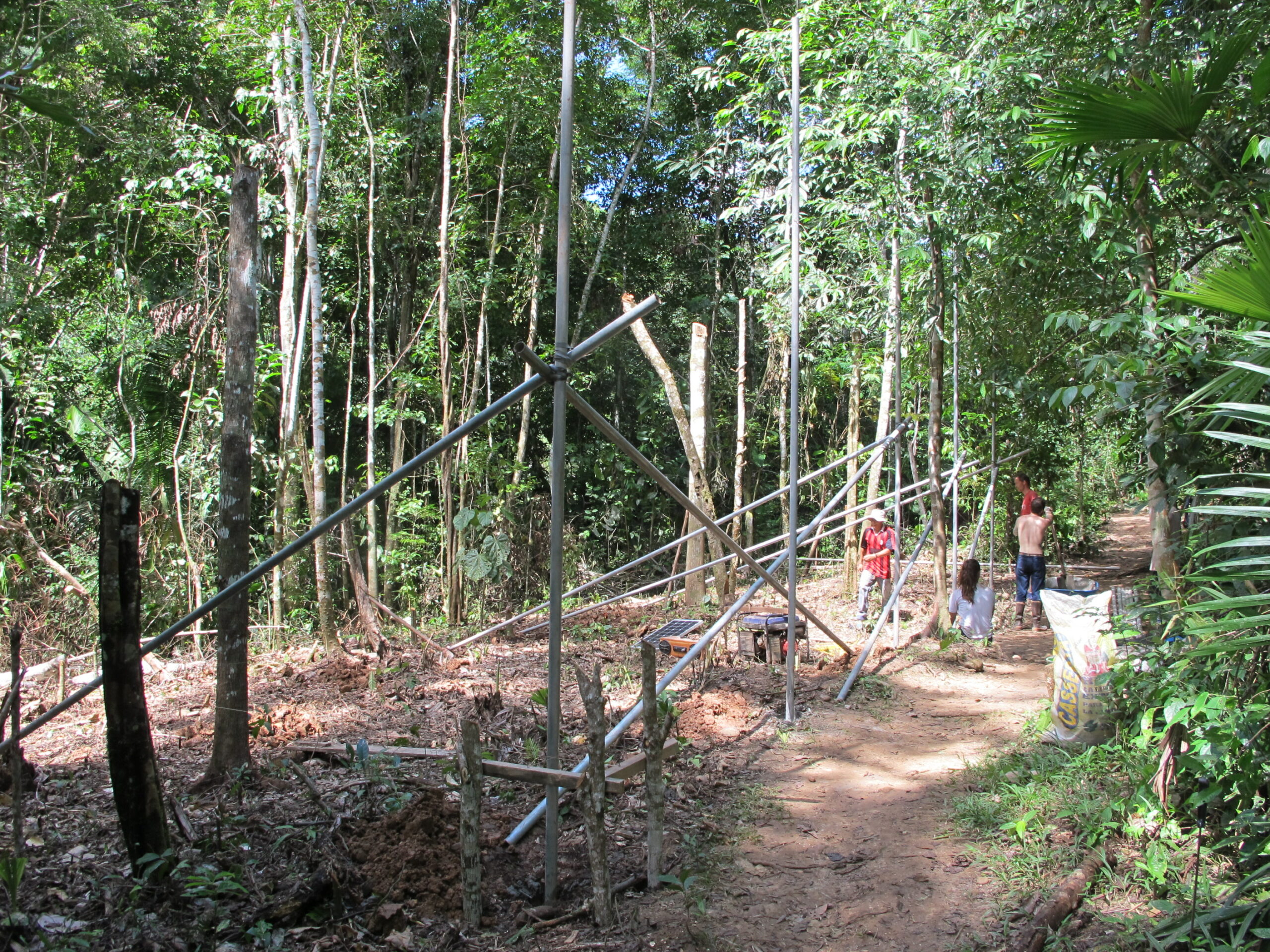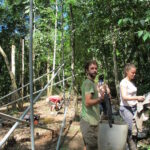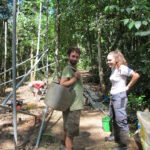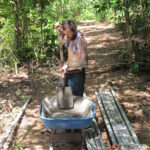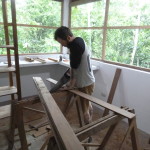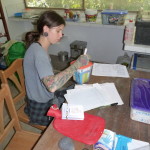The waning of the wet season here in the Peruvian Amazon has not been accompanied by a respite in things to keep us occupied! It has been a busy few weeks; whilst the end of the strike in the surrounding settlements meaning normal routine was restored, all manner of developments, both expected and otherwise, mean the work is no less taxing. The departure of several long-term volunteers have lead to a new stock of workers taking on the great responsibility of ensuring the smooth running of the center; a challenge eagerly accepted by all involved.
Aside from the eagerly anticipated restocking of our kitchen due to the conclusion of the strike, the process of releasing animals has resumed, with several of our residents being let loose. Of course, as one would presume working in this field, the releasing of the animals is accompanied by varying degrees of success, so difficult is it to predict exactly what impact environmental aspects will have on these creatures´ wellbeing, and vise-versa… expect the unexpected!
Monkeys
Chiquita (Baby female woolly monkey), Khali & Cinty (Baby male and female capuchin monkeys)
The last couple of weeks have been difficult for our babies. Recently the volunteers have been in the slow but steady process of distancing ourselves from the babies (a sad but necessary task!) This, on the whole, has been going very well, with the monkeys often happy to play amongst themselves or with the older monkeys, while always keeping an eye on them Khali, being the youngest of the three, is perhaps a little less independent, but this is likely to come with age.
Of course, as with any young animal in a developmental stage, extra care must be taken to prevent illness or infection with these three. Despite all the precautions we take, unfortunately all three have shown signs of a potential parasitic illness in the last few weeks, mainly in the form of diarrhea (most of which ended up in the volunteers´ laps, much to their horror…). This in itself is not too serious, as treatment was given and generally their behavior was more or less normal. However, Khali was noticeably under the weather, strange for a monkey who is normally a very chirpy character. In reaction to this, Khali took up residence in the family house with Olivia and Douwe for more intensive treatment, is thankfully much improved and, at the time of writing, due to be returned to the others (who he is surely missing!) in the next couple of days.
Chaira, Xira (female young white-fronted capuchins) and Nera (young female brown capuchin monkey)
With their scheduled release affected by the strike, the capuchin cage could finally be emptied of its inhabitants, who seem to have taken very well to the element of freedom! One of the white-fronted capuchins, Chaira, can be a challenge, as she seems very determined to interact with people. She will boldly attempt to place a curious monkey paw on any unwary volunteer, or inspect us through the kitchen windows. As with many of the animals here of course, it is important to keep physical or social contact with humans to a minimum, so sadly we must do our best to ignore her advances! The other capuchins however seem shier of humans, and are interacting well with the other monkeys.
Sira (young female night-monkey)
The hyperactive and very cute Sira continues to grow steadily, keeping Olivia awake even when not hitching a ride on her head! We are starting to begin the process of acclimatising her to the interior of a cage, with daily afternoon excursions to the clinic. A cage was prepared there especially for her to jump around on branches, vines and more.
The volunteers are happy with the prospect of more contact with Sira!
Sango (Young male howler monkey)
At the beginning of the 3 week period, Sango was one of the animals needing the most attention at Esperanza Verde. Howlers, very sociable creatures in the wild, are extremely difficult to care for in captivity, due to their specialized diet and being prone to depressive states. The howler did indeed seem depressed frequently, and would rarely emerge from his box at all. Often the most you could hope for was a half-hearted grab at any food you offered, accompanied by a grumpy wail. Every day volunteers were foraging for leaves from the forest for him to eat.
Several attempts at ´releasing´ the monkey had results that were difficult to interpret; he would spend some time simply lying in the sun (something he would rarely receive whilst hiding in his box), and would then climb a tree, where he would stay for hours on end. Constant supervision from volunteers was required when Sango was out of his cage, due to his delicate condition.
As Sango was not eating well, we began to encourage the drinking of a solution containing electrolytes in an attempt to maintain sufficient nutrition. (His reluctance meant this often had to be done using a syringe directly into his mouth; most of it promptly deposited on the floor by the howler.)
Sango´s condition worsened, not helped by an infested wound on his leg, and despite more intensive treatment at the clinic and family home, he sadly died.
The following autopsy (fascinating but difficult to witness) revealed little as to what could have killed him, leaving the family and volunteers to speculate that it may have simply been mal-nutrition.
Whilst very sad, the death of howlers in captivity is not a rare occurrence, as they are not adaptive animals. Specific food and environmental conditions are very important, but unfortunately not always available.
Other Mammals
Coatis
In more uplifting developments, our resident coatis (1 adult male, 3 adult females, 1 female young) have now been successfully released. With seemingly all habitants assembled to bear witness, volunteer and animal alike (even Pauki the oropendola showed up), the coatis cautiously made their first steps towards freedom. Despite an immediate scuffle with Yara the dog, the coatis seem to be doing very well, and generally keep themselves to themselves. After disappearing for days on end, every so often they will strut out of the bushes, and pester the volunteers for food like they never left. They seem to interacting well with the environment, with no obvious conflicts with the other animals despite the monkeys´ best efforts to irritate!

Kiko (kinkajou)
The recently released kinkajou, being nocturnal, is not an often seen animal. Often the only sign of his presence is the mysterious disappearance of the food we continue to leave in his cage. Occasionally however, we would be greeted with a pair of sleepy beady eyes and mass of fur upon entering his cage. As he is close to the family house, he generally is seen there every night climbing for some time on the mesh windows and trying to come in whenever Douwe or Olivia want to step out. Generally, he has taken well to his release; the only slight setback being a parasite bringing with it a loss of weight. After a spot of treatment he was back to seemingly full health. Nonetheless, this does demonstrate the importance of maintaining supervision of released animals to an extent, where possible.
Sloth (rescue)
At Esperanza Verde, a new arrival seems lately an incredibly frequent occurrence. One of the more notable rescues though, was a sloth, who had unfortunately been hit out of a tree in Bello Horizonte by some children. Whether intending to cause injury or not, the children did not leave the animal in a good way: it was suspected the sloth had fallen on her head, and one eye was bloody. Other children though saved it and we were warned to pick it up.
After a few days under Douwe and Olivia´s wings, in the clinic, the sloth was much improved and we decided to release her. The initial stages of the release were worrying, as the sloth seemed to be struggling to climb at first. However, she persisted and eventually made it into a tree. She stayed there for 2 days before she moved on. Where she is now isn´t known, but we like to think she´s thriving!
Birds

Parakeets
In the last update, there were 11 parakeets remaining in Luca (the parakeet release-cage), and as luck would have it (Although they took their time about it,) they all have taken the plunge and left.
Strangely, there seems to be a growing population of parakeets at the port… A mystery!
Oropendola
The children of Bello Horizonte are not earning themselves a good name. Kayla and Olivia came across a boy in the village one evening that had come into possession of an oropendola, somehow involving a rock and catapult…. The majestic but understandably distressed bird was quickly confiscated and whisked off to the clinic by Douwe, who checked it over. Fortunately, the bird was not seriously injured and could be released two days later.
As a side-note, interestingly, the bird was a green oropendola, a species which is supposedly very rare in the Southern Peruvian amazon… something which perhaps heightens the importance of protecting the individual!
Both this case and that of the rescued sloth highlight another incredibly important facet of the work done here by the family and volunteers: that of educating and gaining the co-operation of the local population in respecting and caring for the environment they live in.
Black fronted nunbird
Unfortunately not all rescues end well. On a trip to Regalia, the waterfall an hour from here, Caña, the local man accompanying the volunteers, found this beautiful black bird on the forest floor. It probably had an encounter with a dog, taking most of the feathers out from one of its wings. Very wild, but not able to fly we took it in our care. Although it did accept the grasshoppers we were feeding, it died within two days. For a bird this wild it is very hard to accept captivity and will be easily stressed. It died of an acute pneumonia.
Reptiles
A young yellow footed tortoise was rescued by Kelly (volunteer) when she encountered a family on the path coming from out of the forest. A child basically handed the tortoise over when Kelly wanted to have a look. As Kelly does not speak Spanish it was a bit confusing, but the family seemed to intend for her to take the tortoise. We released it directly the next day.
The next turtles up for release are the recently arrived 5 six-tubercled river turtles, confiscated on the illegal market in Pucallpa. They have been dewormed, had a medical check, and will be released this week, when we expect a visit of some representatives of the ministry.
Construction
Clinic
At the time of the last newsletter the clinic was almost complete, and we are happy to report that the final touches had been put in place! The new facility has been immediately put to use, with many rescues and treatments in the last few weeks. A special thanks here to the Susy Utzinger Stiftung in Switzerland who financed the clinic! This update shows how much it was needed!
Spider-monkey cage
The erection of the new cage for our spider-monkeys is rapidly proceeding, and it shouldn´t be long before they are given a new and improved space to dwell in! Thanks to all the donations received by the Dutch Foundation Esperanza Verde, we will be able to construct this new enclosure for them.
Other cages
With several of the cages recently empty, we have taken the opportunity to clean and reconstruct the interior grounding. This is a very laborious task, so thank you to all volunteers who have helped with its undertaking!
Volunteers
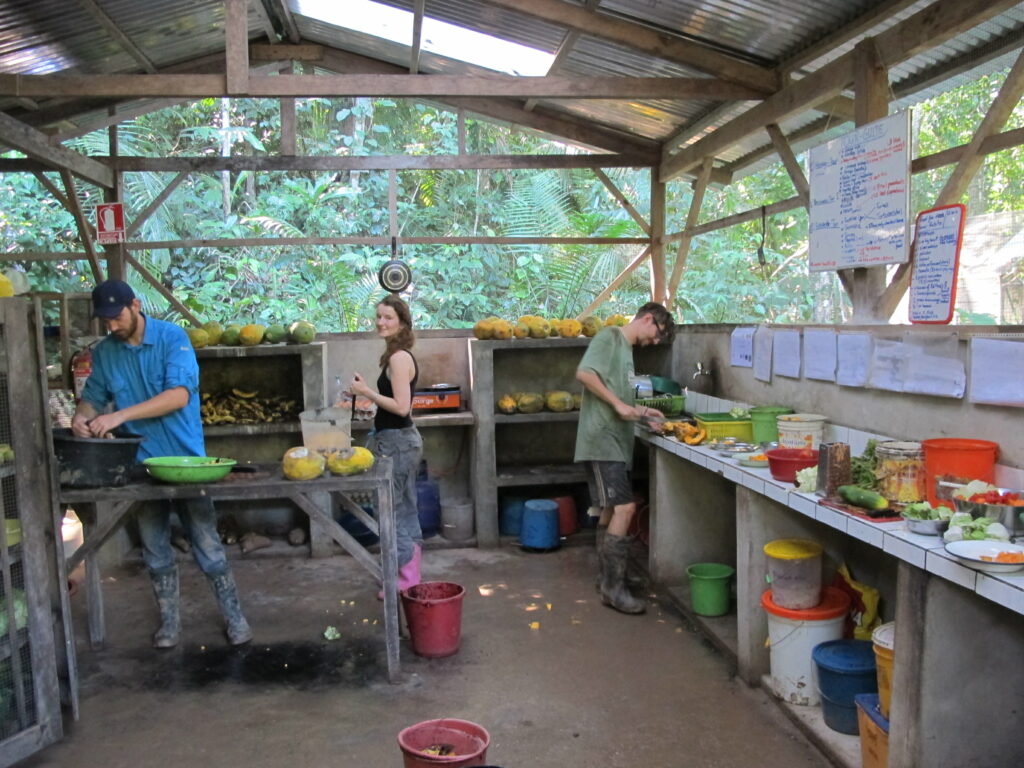
There has been a lot of change recently with regards to personnel here in recent weeks. Both Shani and Morgane left at the start of the month, and whilst Morgane is due to return in the next few days, we´d like to give a big thanks to Shani for all her hard work as head volunteer. More recently, Dan and Kelly followed suite and have departed. Esperanza Verde will miss them and their valuable experience and skills, so a big thank you to them also.
Dominik has also left temporarily to see some of the country with his parents, but he will be returning to the fold in a couple of weeks.
As goes without saying, all help from volunteers and any other support is greatly appreciated, very valuable, and without which the work here could not happen, so a massive thank you to everyone involved.
Hasta luego, adios!


